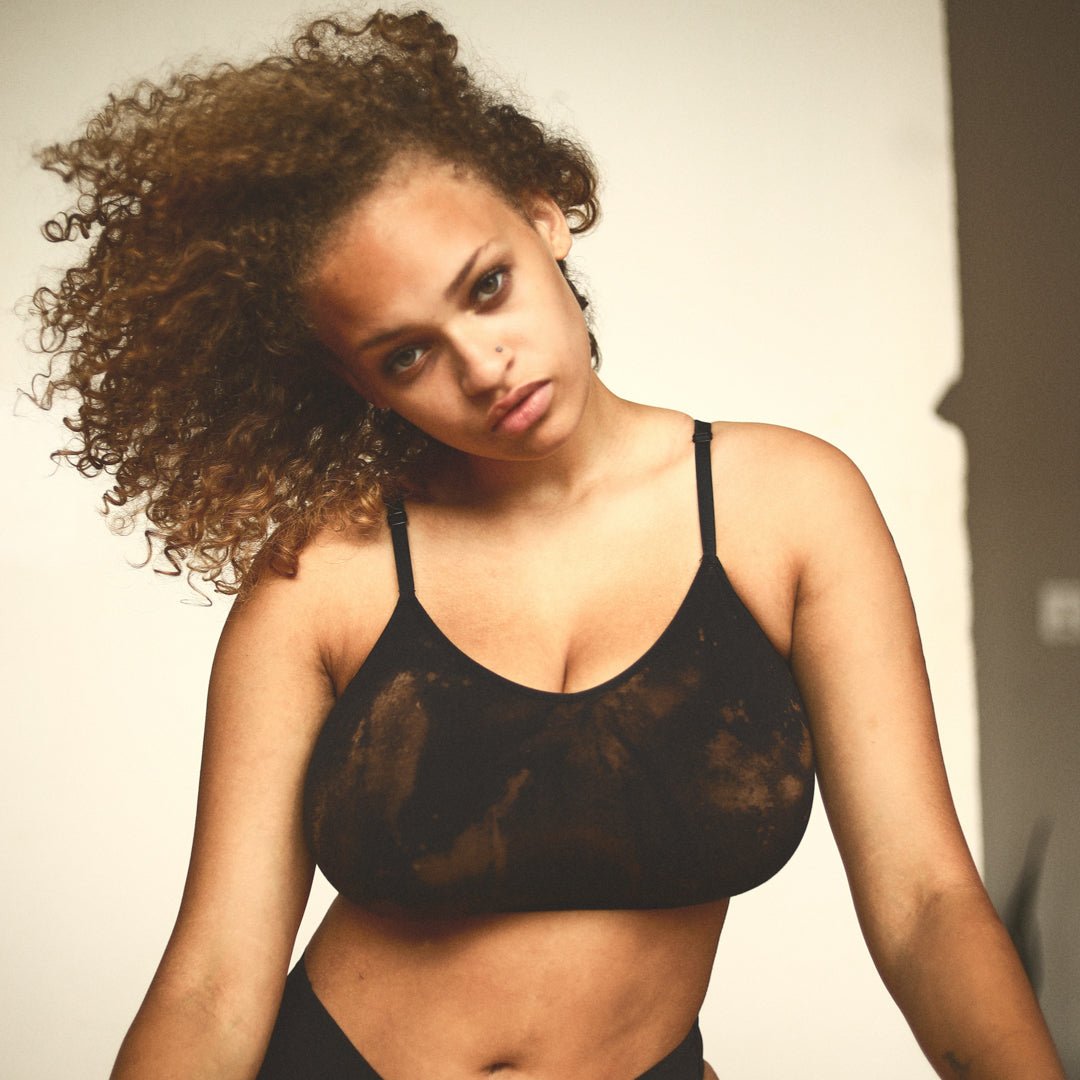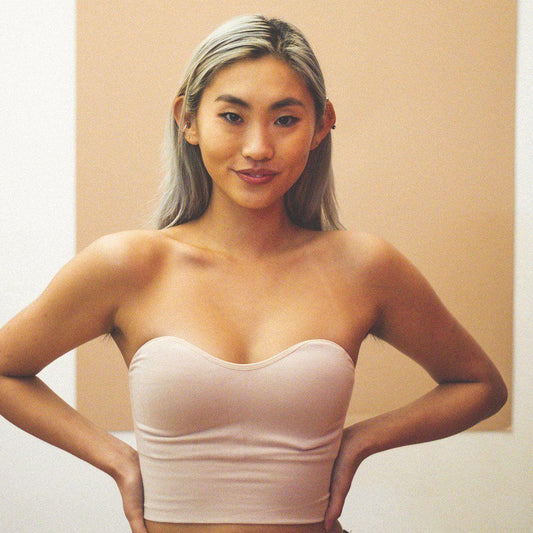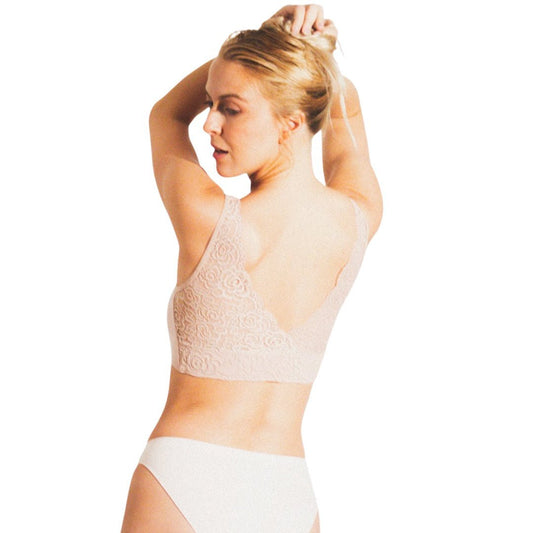
The cup size of a bra is determined by the difference between the band measurement and the overbust measurement
The cup size of a bra is determined by the difference between the rib cage measurement and the overbust measurement, so a 28DD size bra is 28 inch rib cage and 34 inch overbust measurement because 28 inch (rib cage) + 6 inch (difference) = 34 (overbust). Therefore, the cup size in this case would be DD.
A 32D bra size means that the measurements of the rib cage are 32 inches and the overbust measurement (the measurement taken around the chest just above the bust) is 36 inches. The difference between the rib cage measurement and the overbust measurement determines the cup size. In this case, the difference is 4 inches, which is a D cup. This indicates that the woman wearing the bra will have more fullness in the bust area than someone with an A, B, or C cup size.
The size 34DDD bra is designed to fit a person who has a rib cage measurement of 34 inches and an overbust measurement of 40 inches. This sizing system takes into consideration the difference between the ribcage and the full bust measurement, so a size 34DDD bra will have a cup size of DDD, which is equivalent to an E cup. The underbust measurement helps to determine which band size is the right fit, while the cup size is based on the difference between the ribcage and the overbust measurements.
The size 38C bra is designed for someone with a 38 inch rib cage circumference and a 41 inch overbust measurement. The overbust measurement in particular is important when choosing the correct size bra, as this will determine the cup size. A smaller overbust measurement indicates a smaller cup size, while larger measurements need a larger cup size.
A size 38DD bra is designed to fit someone with a rib cage of 38 inches and an overbust measure of 43 inches. The DD in the size indicates that there is a difference of 5 inches between the rib cage and overbust measurements, which is the standard calculation for cup size. The higher the difference between these measurements, the bigger the cup size.
The +4 method of measuring bra size is an outdated and inaccurate way of measuring bra size. It generally gives the wearer an inaccurate bra size and puts them in a “sister size” which is a cup size that is one size larger than the true cup size they need. This happens because this method does not account for the size of rib cage and therefore does not take into account the difference between cup sizes. For example, the +4 method might suggest the wearer take a 34D but in reality they would be more suited to a 30DDD cup size. Therefore, this method can cause a poor fit, which can cause discomfort, decreased support, back pain, and not get the desired look.
The Hilarious Bra Conundrum: Your Top 10 Questions Answered
Ladies and gents, let's talk about bras! You know, those confounding garments that seem to have their own secret language. If you've ever wondered about the baffling world of bra sizes, you're not alone. Here are the top 10 questions you've always wanted to ask, with a dash of humor and a sprinkle of wisdom.
1. How Do I Measure My Bra Size?
Measuring your bra size is like trying to decipher the Da Vinci Code. You wrap a measuring tape around your ribcage, just below your bust, and another around the fullest part of your bust. Then, you consult an ancient scroll of numbers and letters to unlock the code! For detailed instructions, check out Shop BRABAR's guide.
2. What Do the Numbers and Letters Mean in a Bra Size?
Ah, the cryptic numbers and letters. The number represents your band size, which is your ribcage measurement. The letter indicates your cup size, or the mystical difference between your ribcage and bust measurements. So, a 34C means a 34-inch band and a 3-inch difference.
3. What Are Sister Sizes?
Sister sizes are like bra soulmates. They have the same cup volume but different band sizes. If your usual size isn't available, you can always rely on your sister sizes to save the day. It's like having backup treasure maps!
4. How Often Should I Get Measured?
Getting measured professionally is like going on a quest for the Holy Grail – not an everyday affair! Aim to get measured once a year or whenever your body decides to throw a plot twist your way, like a post-pregnancy change or a spontaneous weight gain or loss.
5. Why Do Different Brands Fit Differently?
Different brands and sizing conventions are like different dialects in a foreign country. You might be a size 6 in one brand and a size 8 in another, leaving you feeling like a world traveler in your own closet. Embrace the adventure!
6. How Do I Know If My Bra Fits Properly?
A well-fitting bra should feel like a gentle hug, not an MMA fight. The band should stay put on your ribcage, and the cups should cradle your breasts without any overflows or gaps. If it's comfortable enough to wear on a Netflix binge, you're on the right track.
7. What Types of Bras Are Best for Different Breast Shapes?
Breast shapes are as unique as snowflakes, and there's a bra style for each one. Full breasts? Try full-cup bras. Shallow breasts? Go for some padded push-up action. Asymmetrical twins? Look into bras with removable padding for a little DIY customization.
8. How Do Bra Sizes Change with Weight Gain or Loss?
Weight fluctuations are like plot twists in your favorite novel. If you gain weight, your bra size might also go up a chapter, requiring a larger band and cup. Lose weight, and it's time to rewrite the story with a smaller size.
9. What Are the Differences Between US, UK, and EU Bra Sizing?
International bra sizing is like navigating through different countries without a map. US, UK, and EU sizing systems have their quirks, so always double-check the sizing system when shopping internationally. Lost in translation? We've all been there.
10. Is It Okay to Wear a Bra with a Tighter Band for Extra Support?
Tightening the bra band for extra support is like using a crowbar to open a jar of pickles – it might work, but it's not recommended! A tight band can lead to discomfort and even mutiny among your ribcage residents. Stick to your true size or seek bras designed for ultimate support.
Comfort: Exploring BRABAR's Soft Bra Collection
At BRABAR, we believe that comfort and support should go hand in hand, especially when it comes to bras for teenage girls and young women. Our Soft Bra Collection is designed to provide unparalleled comfort without compromising on style. This collection features a variety of bras, bra tops, and bralettes that are perfect for everyday wear, offering the right blend of softness, support, and style.
Key Features of the Soft Bra Collection
Comfort and Fit: BRABAR’s soft bras are made from high-quality, breathable fabrics that provide a second-skin feel. They offer gentle support without the need for underwires, making them ideal for all-day wear.
Versatile Styles: The collection includes a range of styles to suit different needs and preferences. From everyday soft bras to stylish bralettes and versatile bra tops, there’s something for everyone.
Sustainable and Eco-friendly: Our soft bras are knit with sustainable Tencel yarns, known for their eco-friendliness. The seamless construction is the most eco-conscious method of product manufacturing, ensuring minimal waste and maximum comfort. Additionally, our products are made in WRAP Certified Facilities and are Oeko-Tex Standard 100 and BSCI Certified, ensuring high standards of social and environmental responsibility.
Highlighted Products in the Soft Bra Collection
Soft Strapless Bra Top
The Soft Strapless Bra Top is an essential in our store. It features a sweetheart neckline, removable pads, and no straps. Designed to slip over the head, it has silicone on the back edge to keep the bra in place. This bra is both double-layered and wire-free, with knit-in targeted support to lift and separate the bust. It's perfect for strapless dresses and supports bust sizes up to D+.
Soft V Lace Bralette
The Soft V Lace Bralette by BRABAR is a reversible lace-back bra top that fits A, B, C, D, DD/E, and DDD/F cup sizes. This stylish bralette is available in black and pink, offering versatility and comfort.
Soft Cami Bra Top
The Soft Cami Bra Top combines the support of a bra with the coverage of a camisole. This versatile piece is perfect for layering under sheer tops or wearing alone during yoga or lounging.
Soft V Crop Bra
The Soft V Crop Bra features a reversible design, making it two bras in one. One side is double-layered with a higher V-neckline, while the other side has a plunge single-layer sheer-rib V-neckline. These soft, comfy bras are perfect for nighttime use, low-to-medium impact activities, or everyday routines.
Soft Multiway Convertible Bra
The Soft Multiway Convertible Bra offers multiple ways to wear, providing flexibility and comfort for various outfits and occasions.
Soft Crop Bralette
The Soft Crop Bralette is a super soft crop top bra that fits sizes A-DDD. Ideal for teens and women, this multi-way bra is available in various colors, including ash.
Soft Day Bra with Back Closure
The Soft Day Bra with Back Closure is a super soft, supportive, wireless bra that fits C, D, DD/E, and DDD/F cup sizes. It is available in a bundle offer for added value.
Why Choose BRABAR’s Soft Bra Collection?
Choosing the right bra is essential for comfort and confidence, especially for young girls. BRABAR’s Soft Bra Collection is designed to cater to the unique needs of teenagers and young women. The bras are made from breathable, soft fabrics that ensure all-day comfort. Additionally, the collection offers a range of styles and designs, making it easy to find the perfect fit for any occasion.
Whether you are looking for a comfortable bra for everyday wear, a stylish bralette for a special outfit, or a versatile bra top for active days, BRABAR’s Soft Bra Collection has something for everyone. Explore the collection today and discover the perfect blend of comfort and style.
For more details, visit the Soft Bra Collection on BRABAR's official website. Dive into the world of bras with confidence. And remember, Shop BRABAR is your trusty sidekick on this hilariously confusing adventure, offering an array of styles and sizes to suit your bra-volous needs! Happy bra shopping, fellow adventurers!




